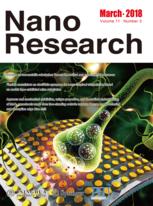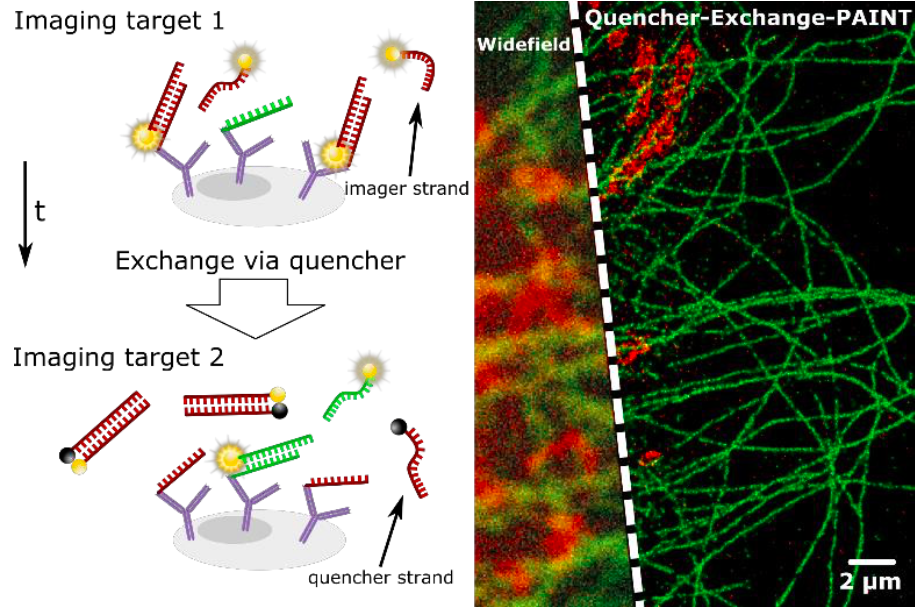
Our paper on using quenchers to simplify multiplexed super-resolution has just appeared online in Nano Research. The investigation was lead by Tobias Lutz.
It is the result of a collaboration with the Pagliara group at the LSI and Lorenzo Di Michele at the Cavendish.
The method we present in the paper simplifies multiplexed DNA-PAINT considerably and has a few fairly simple take home messages:
- Quencher-Exchange-PAINT enables rapid, low-crosstalk Exchange-PAINT imaging without any washing steps
- it enables rapid imager exchange when diffusion is slow (e.g. in tissues)
- in summary, it reduces the complexity of Exchange-PAINT experiments considerably
We also show something what you might call a negative result and which is accordingly not so much emphasized in the paper. So let's make the point clearly here - it is not at all surprising when you think through how the thermodynamics works out but it is nice to show it experimentally:
- the use of competing quenchers is not suitable for increasing the signal-to-background ratio in DNA-PAINT. One cannot do better in terms of the signal-to-background ratio for DNA-PAINT than adjusting imager concentrations to achieve the desired event rate, at least not via simple competitive quencher binding schemes. 1
That takes nothing away from the use of quencher strands to effectively and very simply remove imagers from the solution.

-
If you are trying to reduce background arising from imager strands in solution, other strategies have been proposed, e.g. FRET-PAINT. ↩